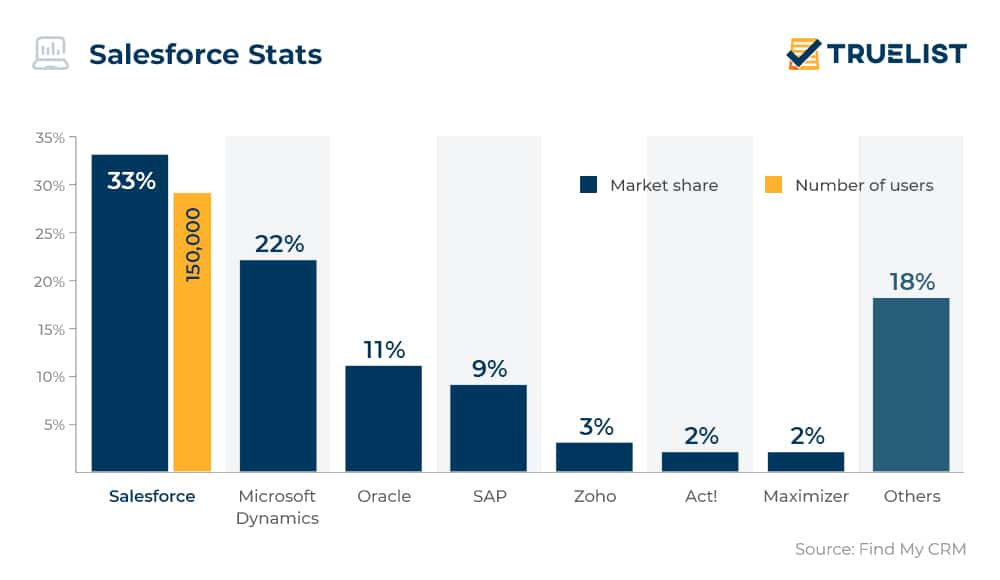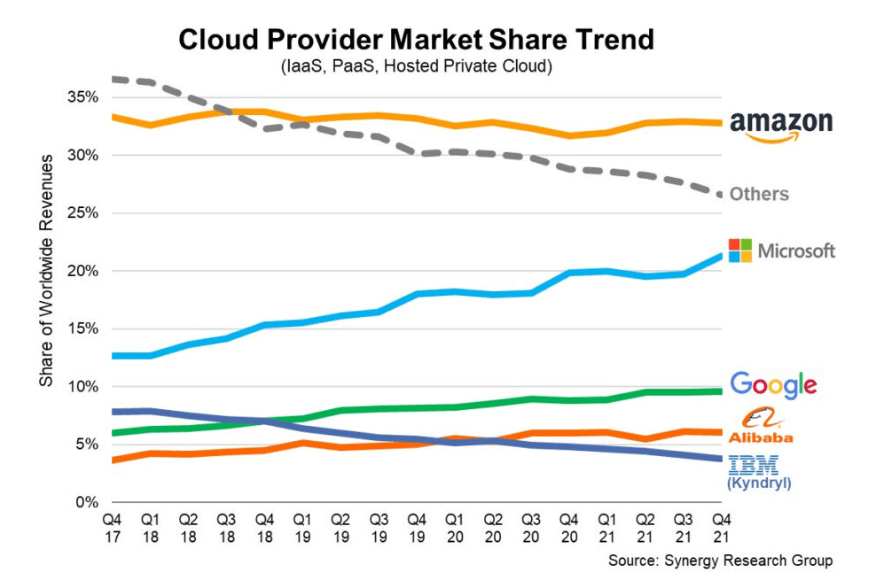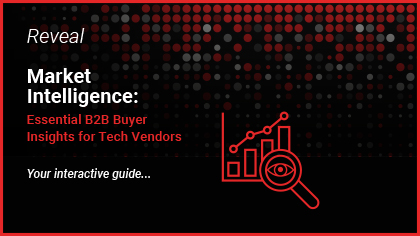Harnessing the power of technographic data can be a game changer in today’s data-driven business landscape. If B2B marketers focused in the technology industry are able to understand the key challenges businesses face when it comes to digital transformation, they can target them with the right marketing messages, across the right channels, and at exactly the right time to engage, intercept, and ultimately boost sales.
This comprehensive guide explores what technographic data is, how it’s collected, and its various applications in enhancing marketing and sales strategies.

Reading time: 3 minutes
Technographic data defined
Technographic data, in simple terms, refers to insights about a company’s technology usage. It provides valuable information about an organization’s tech stack, including the hardware and software they employ, the tools and application types they use, and how they implement and utilize these systems.
This type of data is part of a broader technology market segmentation, which also includes demographics and firmographics. By understanding a company’s technology stack, businesses can gain a competitive edge, improve their marketing results, and elevate their overall performance.
The importance of technographic data
In an era where big data reigns supreme, the potential of technographic data is becoming increasingly evident.
Technographic data plays a crucial role in this context by providing insights into an organization’s technology usage. This information can guide them in their account targeting, sales intelligence, and customer acquisition strategies. Moreover, it’s particularly useful for companies looking to distinguish themselves in a crowded marketplace – allowing more effective targeting and boosting revenue.
Technographic data essentially allows greater practical insight into the technology usage of a company, and the difficulties in-market buyers are facing when it comes to their technological stack.
Who uses technographic data?
The majority of IT solution providers are already leveraging the power of technographic data in their long-term strategies. The adoption of such data for small start-ups and small-medium sized businesses is growing at a considerable rate – given that most large enterprises have already integrated technographic data successfully and are reaping its benefits.
How is technographic data collected?
There are primarily three methods for gathering technographic data:
- Surveys: This traditional method involves conducting phone or email surveys to understand a company’s technology usage.
- Data scraping: This method involves extracting code from websites to identify key information. While it’s more efficient than surveys, it has its limitations – such as outdated or inaccurate data.
- Buying technographic data: This involves purchasing a database of technographic data. While this is the easiest route, it’s essential to choose a reputable data provider to ensure the information’s accuracy and reliability.
Applications of technographic data
Technographic data can be applied in various ways to enhance marketing and sales strategies:
- Precise customer segmentation: Technographic data can help businesses categorize and prioritize their prospects based on their technology usage, enabling more personalized customer engagement.
- Account-based marketing (ABM): By understanding the technologies their ideal prospects use, businesses can craft personalized and relevant messaging, giving them an edge over their competitors.
- Customer success: Technographic data sources can signal when a prospective customer might be experimenting with a competitor’s platform, allowing businesses to respond proactively.
- Competitor analysis: Technographic capability can reveal who your competitors’ customers are, helping you understand their ideal customer profile (ICP) and strategize accordingly.
- Forecasting: Technographic data can provide insights into market trends and help identify high-intent prospects, improving conversions.
Gauging the quality of technographic data
Choosing a technographic data provider requires careful consideration. Factors influencing the quality of technographic data include:
- Accuracy: The data should reflect current usage.
- Scale: Technographic data sets should cover a large number of companies to provide statistically significant insights.
- Ease of integration: Data should be easily integrated with existing systems.
- Historical repositories: Access to historical data can provide deeper insights into market trends.
Complementing technographic data with other data types
To gain a holistic understanding of your target market, it’s crucial to complement technographic data with other types of data:
- Demographics: This includes characteristics such as age, education, gender, location, marital status, and location.
- Psychographics: This refers to factors such as personality, values, beliefs, lifestyle, attitudes, and interests.
- Firmographics: This relates to characteristics of companies, such as industry, location, company size, and business performance.
By integrating these different types of data, businesses can craft more effective and personalized marketing strategies – ensuring their B2B marketing efforts truly count.
Examples of technographic data
Gaining invaluable insight into the following examples of technographic data is key for B2B prospecting efforts within the technology industry:
- CRM software a business is using
- Cloud service provider they are entrusting
- Marketing automation tools they are leveraging
- Analytics platforms they are scrutinizing.
Yet, it also extends to the everyday essentials that a business chooses to leverage:
- IT infrastructure
- Hardware
- Software.
Insight into a combination of the above can generate profound intelligence allowing B2B marketing and sales efforts to thrive. For instance, knowing which of these your prospect uses would allow you to highlight the benefits of your service – such as having a salesforce plugin – when you reach out to them:

Your technology product might have specific requirements or use cases dependent on which cloud infrastructure it is being integrated with. Having this preparation can put you ahead in the sales process by showing you have done your research:
Cloud Services AWS vs Microsoft Azure

Final thoughts
In the digital age, harnessing the power of technographic data is crucial for businesses to stay competitive. By understanding a company’s technology stack, B2B marketers can craft more effective marketing strategies, improve sales productivity, and ultimately drive business growth.
If you’re looking to leverage technographic data to fuel your business growth, get in touch to learn more. We’re here to guide you, acting as an extension of your team to drive market intelligence into your business and accelerate sales velocity.








